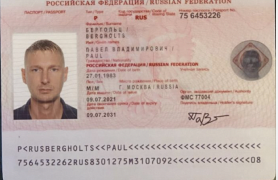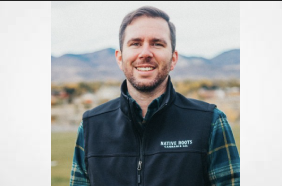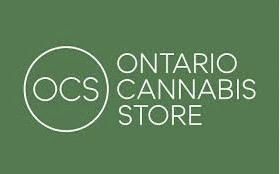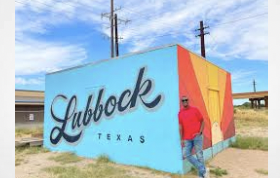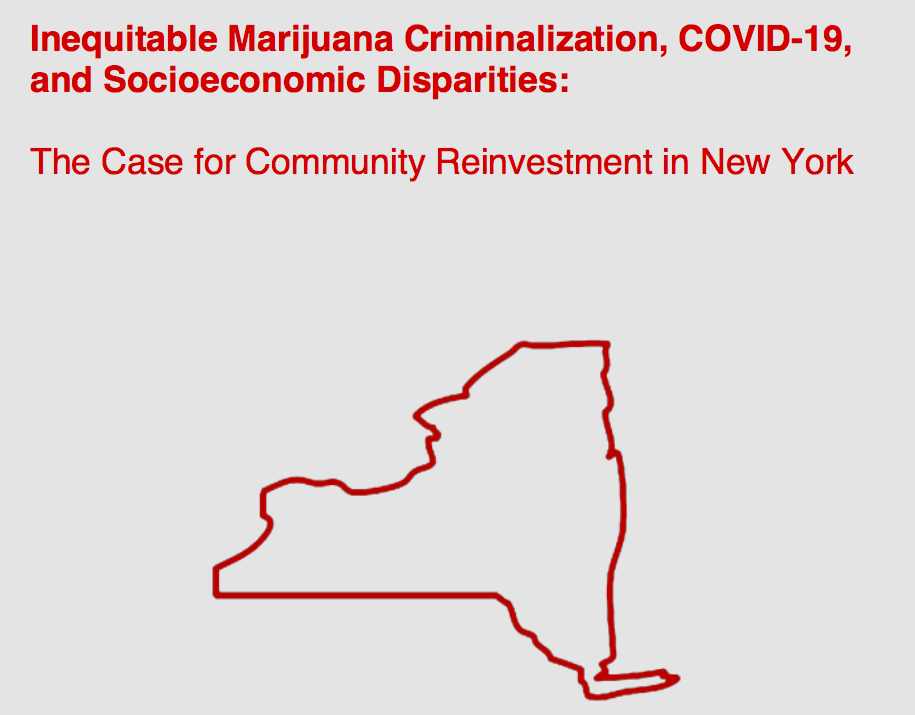The prevalence of substantial racial disparities in marijuana arrests is well established. In 2018, New York City Comptroller Stringer released a report documenting how disparities in marijuana policing fall along both racial and socioeconomic lines. This research expands upon that work in two important ways:
1. We explore whether the same disparities occurred in other areas of New York State, including Syracuse, New Rochelle, and Buffalo.
2. We additionally analyzed social vulnerability and COVID-19 rates to assess whether the communities who have been most impacted by marijuana policing are also disproportionally impacted by COVID-19.
New York City, New Rochelle, Syracuse, and Buffalo were selected to present a holistic picture of marijuana prohibition, racial inequities in arrests, and health disparities across the state. The four case studies are all in the top seven largest cities in New York State and were chosen to represent different regions within the state, as well as economic, educational, and racial diversity.
In each city we identified the zip codes with the highest and lowest rates of marijuana-related arrests and compared averages between the two groups on a number of indicators. For ease of reading, we use the terms “high marijuana arrest zip codes” and “low marijuana arrest zip codes” to refer to these groupings. However, there were two exceptions to this procedure. First, due to New Rochelle’s small size, there were not enough zip codes to generate averages, so the data presented reflects the single zip codes with the highest and lowest arrest rate. Second, as the NYPD data on marijuana arrests is organized by precinct rather than zip code, we analyzed the data for New York City by precinct.
Arrests and Race
The analysis suggests that similar disparities in marijuana policing are occurring in New York City, Syracuse, New Rochelle, and Buffalo. In all four cities, marijuana arrests are disproportionately concentrated in communities of color. In Syracuse, which reports the home zip code of those arrested, rather than where the arrest occurred, marijuana arrests disproportionately affect those who live in communities of color. People of color are consistently over-represented in marijuana arrests, and areas with the highest marijuana arrest rates also tend to have proportionally larger populations of color.
Social Vulnerability Index
The Social Vulnerability Index (SVI) is a measure created by the Centers for Disease Control that uses 15 social factors (e.g. poverty, lack of vehicle access, crowded housing) in order to assess the ability of a community to prevent suffering and loss in the wake of disaster and disease. As it is difficult to assess the numerous impacts of COVID-19 on a community, we compared SVI scores for the high and low marijuana arrest zip codes in each city. High marijuana arrest areas consistently ranked higher on SVI scores than low marijuana arrest zip codes, indicating increased vulnerability during public health emergencies.
Median Household Income, Poverty, and SNAP
Across all four cities, the high marijuana arrest zip codes demonstrate more socioeconomic deprivation compared to the low marijuana arrest zip codes. In each city, the average poverty rate was notably higher among the high marijuana arrest zip codes. High marijuana arrest zip codes consistently have nearly half the median household income of the low marijuana arrest zip codes (except for New Rochelle, where the disparity is even greater). Across all four cities, the average percentage of families receiving SNAP (Supplemental Nutrition Assistance Program) in high marijuana arrest zip codes was at least 3 times greater than in low marijuana arrest zip codes.
Homeownership, and Median Home Value
Socioeconomic disparities were also evident in housing. In every city, we observed that high marijuana arrest zip codes had both lower rates of home ownerships and lower median home values than low marijuana arrest zip codes.
COVID-19 Rates and Health Insurance
Across all cities, we found higher average COVID-19 positivity rates among the high marijuana arrest zip codes compared to the low marijuana arrest zip codes. However, it should be noted that we were unable to find data for three zip codes in Syracuse due to the lack of standardized reporting of COVID-19 data across New York State. Even so, the connection between racial and social inequities and COVID-19 has been thoroughly documented elsewhere. We also found that, on average, a slightly larger percentage of people under 65 are uninsured among the high marijuana arrest areas than the low marijuana arrest zip codes.
Conclusion
Despite regional differences, New York City, New Rochelle, Syracuse, and Buffalo demonstrate similar trends. People of color are over-represented in marijuana arrests, and high marijuana arrest zip codes are characterized by larger communities of color and greater socioeconomic deprivation. There is also evidence to suggest that high marijuana arrest zip codes are more severely impacted by COVID-19.
FULL PAPER
DPA_PSP_Marijuana_Disparities_COVID_3.16.2021